Sarah L. Johnson's Blog, page 120
April 2, 2013
Around the world with historical fiction: April releases
I got a little carried away with this post. So many covers, so many books! But over the past few months, I kept coming across historical novels I wanted to read, and so many of them were set to appear in April. It's not the cruellest month at all, not for historical fiction readers. The diversity of historical settings struck me as well. Take a look at the places they'll let us travel!
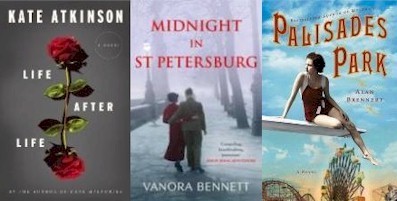
20th-c England ~ 1911 Russia ~ 1930s New Jersey
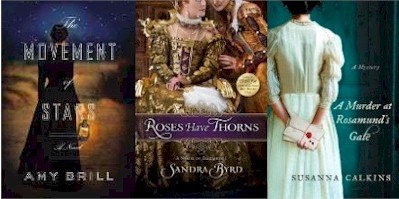
1845 Nantucket ~ Tudor England ~ 17th-century England
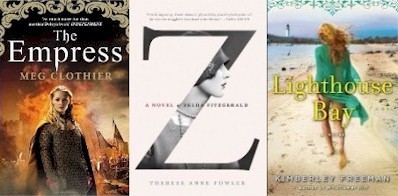
12th-c Constantinople ~ 1920s US & Europe ~ early 20th-c & modern Australia
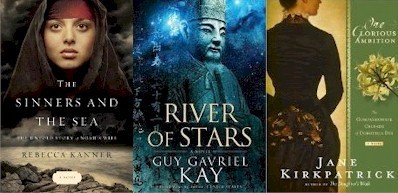
Biblical times ~ an imagined Song Dynasty China ~ 19th-c New England

1960s small-town Minnesota ~ 1880 South Africa ~ 1940s England, France, India, Jamaica
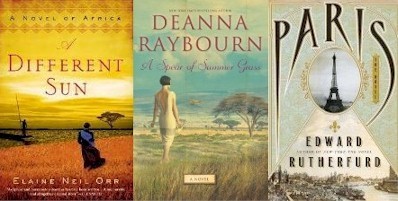
1840s West Africa ~ 1920s Kenya ~ Paris through the ages
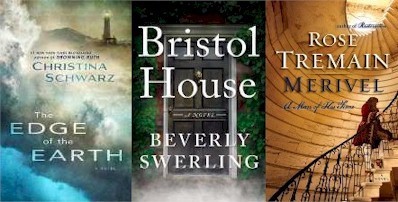
1890s California ~ Tudor and modern England ~ Restoration England

WWII England ~ 20th-c England and Kenya ~ Postwar Taiwan and U.S. West

20th-c England ~ 1911 Russia ~ 1930s New Jersey

1845 Nantucket ~ Tudor England ~ 17th-century England

12th-c Constantinople ~ 1920s US & Europe ~ early 20th-c & modern Australia

Biblical times ~ an imagined Song Dynasty China ~ 19th-c New England

1960s small-town Minnesota ~ 1880 South Africa ~ 1940s England, France, India, Jamaica

1840s West Africa ~ 1920s Kenya ~ Paris through the ages

1890s California ~ Tudor and modern England ~ Restoration England

WWII England ~ 20th-c England and Kenya ~ Postwar Taiwan and U.S. West
Published on April 02, 2013 04:30
April 1, 2013
Small Press Month - wrap-up and contest winners
Thanks to everyone who entered the giveaway for a small press historical novel. I thoroughly enjoyed reading all your comments (and blogiversary wishes!) and learning what aspects of the blog you liked the most, too. There were a few things that several of you mentioned that I thought I'd summarize here:
- You've asked your library to buy books mentioned here, and they were willing to do so. This is very cool all around.
- I got a lot of general feedback on authors' guest post contributions and the variety they offer. Jodi Daynard's piece in particular was mentioned by many readers as a standout essay.
- The galleries with title previews are a favorite. My site stats bear this out too. I'm glad to hear that because I have a very large preview post forthcoming tomorrow.
- The demise of Google Reader was mentioned by a few readers. I'm depressed about it too; I've been using it for years to track blogs. I've been playing around with alternatives (Feedly, Netvibes, etc.) and have found Bloglovin to be the most convenient for my needs. I especially like that I get an email every evening with links to the day's new posts. There's an easy way to migrate your posts from Google Reader over to Bloglovin, and once you're signed in, you can follow Reading the Past here.
- I was also happy to see the small press focus went over well and drew people's attention to novels they might otherwise have missed, as one reader said. I'd set myself a goal to post every other day or so to keep the momentum going. I'd especially like to acknowledge the authors who supplied guest essays providing their perspectives on the genre - thanks!
I'd actually had plans to review even more small press novels (I had a pile of them set aside in my living room) but as usual, I got caught up in things like work and other writing assignments. I'll still be reviewing small press titles, of course, just mixed in with other reviews I've been saving up. Will I do this next March too? It's something I've been debating, but I have almost a year to think about it.
And now for the giveaway winners:
Tim G.andTiffany
Congratulations! I'll be in touch via email to get your addresses - and please browse through the last month's posts and let me know which book you'd like as your prize.
- You've asked your library to buy books mentioned here, and they were willing to do so. This is very cool all around.
- I got a lot of general feedback on authors' guest post contributions and the variety they offer. Jodi Daynard's piece in particular was mentioned by many readers as a standout essay.
- The galleries with title previews are a favorite. My site stats bear this out too. I'm glad to hear that because I have a very large preview post forthcoming tomorrow.
- The demise of Google Reader was mentioned by a few readers. I'm depressed about it too; I've been using it for years to track blogs. I've been playing around with alternatives (Feedly, Netvibes, etc.) and have found Bloglovin to be the most convenient for my needs. I especially like that I get an email every evening with links to the day's new posts. There's an easy way to migrate your posts from Google Reader over to Bloglovin, and once you're signed in, you can follow Reading the Past here.
- I was also happy to see the small press focus went over well and drew people's attention to novels they might otherwise have missed, as one reader said. I'd set myself a goal to post every other day or so to keep the momentum going. I'd especially like to acknowledge the authors who supplied guest essays providing their perspectives on the genre - thanks!
I'd actually had plans to review even more small press novels (I had a pile of them set aside in my living room) but as usual, I got caught up in things like work and other writing assignments. I'll still be reviewing small press titles, of course, just mixed in with other reviews I've been saving up. Will I do this next March too? It's something I've been debating, but I have almost a year to think about it.
And now for the giveaway winners:
Tim G.andTiffany
Congratulations! I'll be in touch via email to get your addresses - and please browse through the last month's posts and let me know which book you'd like as your prize.
Published on April 01, 2013 16:30
March 30, 2013
Russian history, a mystery, and a reviewer's dilemma
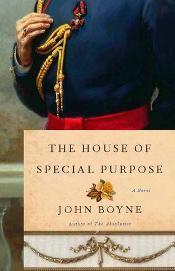 When I received an ARC of John Boyne's The House of Special Purpose from Booklist in mid-February, I was pleased; I enjoy reading novels set in Russia, and while Boyne's novels are highly acclaimed, I'd never read his work before. I was also a little puzzled. The publisher's description went:
When I received an ARC of John Boyne's The House of Special Purpose from Booklist in mid-February, I was pleased; I enjoy reading novels set in Russia, and while Boyne's novels are highly acclaimed, I'd never read his work before. I was also a little puzzled. The publisher's description went: "From the author of The Absolutist, a propulsive novel of the Russian Revolution and the fate of the Romanovs."
Given that and the title, the meaning of which anyone who's done any reading about the Russian imperial family will likely recognize, I knew the event that the plot would be leading toward. Why now, I wondered. Why are we seeing a novel about the fate of the Romanovs now, when it's already been proven what happened to them?
This is the US edition, though. The original UK edition appeared in early 2009, when things weren't wrapped up quite so tidily. I imagine that historical discoveries that happen mid-writing (or just before publication) can cause trouble for a novelist. Any fiction published on that topic before a certain date could be considered speculative, and thus acceptable to readers. Novels published after that time could be called either straightforward historical fiction, or alternative history/fantasy, depending on the direction the author takes. However, in the case of The House of Special Purpose, calling it either one in the review would give away the plot! I didn't want to do that.
Also, in reading the novel, I was given many hints as to where the storyline would be heading, but I didn't know for sure (I was prepared to be wrong). Boyne did a great job keeping the suspense level high. And so I struggled a bit with how to word the review, wanting to acknowledge the issues but trying to keep it as spoiler-free as possible. I've tried not to give too much away here, either... hopefully I've succeeded.
This is what I came up with; it appeared in Booklist's 3/15 issue.
Russophiles should immediately comprehend the title of Boyne’s suspenseful and touching novel. In 1981, as his adored wife, Zoya, lies dying, Georgy Jachmenev, an elderly Londoner, reflects on their lengthy marriage and the secret tragedies they endured. A parallel plotline opens in early twentieth-century Russia as young Georgy, a muzhik (peasant) from a backwater village, saves the life of the tsar’s cousin and is brought to St. Petersburg, where he becomes protector to the frail tsarevich and finds romance with Grand Duchess Anastasia. The two narratives dovetail, as the latter progresses forward in time while the former marches steadily backward. The book’s central mystery is dated now, which may limit readers’ appreciation, but it is ingeniously constructed and gripping nonetheless. While no prior historical knowledge is required, the more familiar readers are with the Romanovs, the more clues (and false leads) they will encounter as they proceed. Boyne takes some factual liberties, particularly in the earlier-set segments, but he also skillfully evokes the wrenching pain of loss and exile while presenting a tribute to enduring love.
What are your thoughts? Would you pick up a novel in which the central mystery no longer exists in real life? Does it take anything away from your reading experience, or would you go for it anyway if the subject grabbed your interest?
The House of Special Purpose will be published by Other Press, a NY-based independent publisher, on April 2nd, 2013 (trade pb, $16.95, 480pp); it appeared from Doubleday in the UK in 2009.
Published on March 30, 2013 08:00
March 28, 2013
A careful juggling act: the small publisher in genre fiction, a guest post by Evan Ostryzniuk
Evan Ostryzniuk's detailed and informative essay examines small press publishing from the author's perspective. His post should be of great interest both to writers contemplating a move to smaller publishers and to readers curious about about the publishing industry. His novels Of Faith and Fidelity and Of Fathers and Sons, both from London-based Knox Robinson Publishing, are books 1 and 2 in the English Free Company series set in the late 14th century. Welcome, Evan! ~
A careful juggling act: the small publisher in genre fictionEvan Ostryzniuk
I will start this guest blog post with an equivocal statement. Being an author of a small publisher offers certain advantages and challenges, most of which stem from the limited scale of operations. Of course, I have not had the opportunity to work closely with a large publisher, so any implicit comparisons I might make may not be wholly accurate. That said, I have enjoyed my fair share of adventures with the start of my writing career!
 When I went in search of a literary agent for my first novel, having been warned against submitting directly to a publisher of any description, I ran up against a polite and well-intentioned editorial wall. Despite having done a load of research on the publishing industry and how to present myself and my work properly, I could not find anyone to bite on my genre novel. Most responses, when I did receive genuine letterhead from the office of a literary agent, were generic and left me with the impression that they were looking for an instant hit or hoping to latch on to an already hot property, as opposed to cultivating unknown but ambitious authors. True, the genre I had chosen to write in is not at the very top of bestseller lists, so I was not discouraged by the experience, but it became clear to me that I would need to gird my loins if I wanted to travel down this well-trodden road that was thick with competitors.
When I went in search of a literary agent for my first novel, having been warned against submitting directly to a publisher of any description, I ran up against a polite and well-intentioned editorial wall. Despite having done a load of research on the publishing industry and how to present myself and my work properly, I could not find anyone to bite on my genre novel. Most responses, when I did receive genuine letterhead from the office of a literary agent, were generic and left me with the impression that they were looking for an instant hit or hoping to latch on to an already hot property, as opposed to cultivating unknown but ambitious authors. True, the genre I had chosen to write in is not at the very top of bestseller lists, so I was not discouraged by the experience, but it became clear to me that I would need to gird my loins if I wanted to travel down this well-trodden road that was thick with competitors.
So, after seeking solace in one of the many forums dedicated to wannabe authors, I chose the path-less-taken and sought out a small press, under the assumption that it would be amenable to direct contact. I quickly found a new, genre-specific publisher that had big plans and was willing to give my series of historical novels a chance. What immediately appealed to me about them, aside from their acceptance letter, was the opportunity for us to grow together. This might sound sentimental, but I am the type of person who wants to have if not control, then at least a thorough understanding of the publishing process. Major publishers have established structures, and so the author must follow the path laid out. A small outfit, on the other hand, offers a more intimate degree of interaction, exchange of ideas, and access to senior personnel who are making the decisions.
A major worry with small publishers is the level of professionalism, usually because of smaller staffs and less experience. I am fortunate that from the contract to editing to design, my publisher is an exemplar of professionalism. Also, any number of them might be fraudulent. This is one area where working with a small publisher can actually be an advantage, since because they have fewer competitive levers to level the playing field, they must compensate where they can. A major publisher can get away with ignoring or poorly treating their authors (up to a point) – small publishers cannot.
The greatest challenge of working with a small publisher, for me, is physical market access, as opposed to virtual access. The big boys hog shelf space in brick and mortar shops, especially when it comes to genre fiction. This leaves the author and publisher in a catch-22 situation, whereby a book cannot make it to the buying lists unless it has solid sales behind it, but without exposure sales are difficult to generate. Also, the small publisher does not have much leverage to really champion a book by an unknown author. As a result, I have had to sometimes resort to consignment selling and making personal agreements with shops.
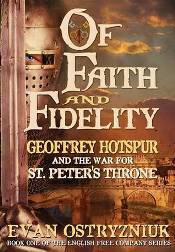 The flip side to this old-fashioned way of doing the publishing business is that it is being comprehensively challenged by e-books and online sales, and this is a place where a small publisher can outpace established behemoths. The absence of a large bureaucracy, long-standing business model and vested interests within the company means that the small publisher is more flexible in adopting the new virtual tools of the industry, which allows for greater independence and more flexibility in approaches to promoting authors. I deal with very few people during the process of getting my books to print and the interaction is more dynamic. I can appeal to the senior editor directly instead of steadily calling upwards through a long chain of command, and responses are usually swift and precise.
The flip side to this old-fashioned way of doing the publishing business is that it is being comprehensively challenged by e-books and online sales, and this is a place where a small publisher can outpace established behemoths. The absence of a large bureaucracy, long-standing business model and vested interests within the company means that the small publisher is more flexible in adopting the new virtual tools of the industry, which allows for greater independence and more flexibility in approaches to promoting authors. I deal with very few people during the process of getting my books to print and the interaction is more dynamic. I can appeal to the senior editor directly instead of steadily calling upwards through a long chain of command, and responses are usually swift and precise.
That said, I am expected to do a lot of the leg work in generating interest in the product. This is both advantageous and problematic, I find. Because the publisher expects me to create ideas, suggest graphic elements and generally approve the final product, I have more control over my novel’s image. At the same time, the absence of an established methodology or system allows for uncertainty to remain about the venture and many valuable hours spent not in writing.
A similar situation exists in marketing and promotion, which is where I feel the least amount of support. The absence of an experienced PR arm with a long reach at a small publisher results in this heavy burden being transferred to the author. A shared fate implies shared responsibilities, but it also means having to master a host of new technologies and applications, which costs more time than money, albeit, but also means having to be even more creative. Sometimes, it is nice to have the path laid out. Again, having control over promoting and marketing also means having control of your own image. However, having the name of a major publishing house near the author’s name does provide a lot of cachet. At the same time, there is little risk of becoming overexposed.
Another major challenge is getting ‘high-end’ reviews, although this may be more of a function of the author’s fame than the reach of the publisher. Nevertheless, in today’s increasingly consumer-driven venues, I find that the duty of getting books into the hands of readers is falling increasingly on the author himself or herself, with some support from the publisher, and that mostly of the technical variety.
To sum up, I would say that a small publisher offers excellent opportunities for the strong-willed author who really knows how he wants his readership to see him or her and has enthusiasm for mastering a great many aspects of the business. At the same time, the author must be fully aware of certain limitations involved and be creative in overcoming those challenges.
About the author
Evan Ostryzniuk was born and raised in Canada. After graduating from the University of Saskatchewan with a B.A. in History and Modern Languages and an M.A. in History, Evan crossed the ocean to do post-graduate work at the University of Cambridge, concluding four years of research with a doctoral thesis on the Russian Revolution. He then found his way to Eastern Europe, where he took up positions as a magazine editor, university lecturer and analyst in the financial services sector before rising in the ranks of the publishing industry to become Editor-in-Chief of a popular weekly. Evan currently resides in Kyiv, Ukraine near a large candy factory. He travels extensively, including to the locations of his novels.
About the novel Of Fathers and Sons: Geoffrey Hotspur and the Este Inheritance
Italy 1395. The Este lands are vulnerable. The death of the Marquis of Ferrara, Alberto d'Este, has left his eleven-year-old son, Niccolo, as sole direct heir. Though born out of wedlock, the pope himself has legitimized Niccolo’s birth, but in an age when great lords ruled by sword as much as by law, having a boy lead the family can be a sign of weakness.
 Made unhappy by the father, some Este vassals want to humble the son, and they see their opportunity in Niccolo’s insecure minority rule. Championing their cause is the head of a reduced branch of the Este clan who is not only a famous condottiere, but also a captain of the ambitious lord of Milan. Fearing that the defeat of Niccolo will lead to a shift in the already fragile balance of power in favor of the over mighty Milan, the city-states of Florence, Venice and Padua have combined to try and keep the Este inheritance in the boy’s hands.
Made unhappy by the father, some Este vassals want to humble the son, and they see their opportunity in Niccolo’s insecure minority rule. Championing their cause is the head of a reduced branch of the Este clan who is not only a famous condottiere, but also a captain of the ambitious lord of Milan. Fearing that the defeat of Niccolo will lead to a shift in the already fragile balance of power in favor of the over mighty Milan, the city-states of Florence, Venice and Padua have combined to try and keep the Este inheritance in the boy’s hands.
Of Fathers and Sons is the second book in the English Free Company series set in the late Middle Ages. The Company is led by the skilled but reckless Geoffrey Hotspur, an orphan-squire and ward of the mighty Duke of Lancaster, whose driving ambition is to become a knight. Before Henry won his miraculous victory at Agincourt, before the Borgias became infamous, before Constantinople fell to the Turks, there was Geoffrey Hotspur, a man as tall as Charlemagne and possessing a sword that rivaled Excalibur. Geoffrey and Niccolo are confronted by the same questions: How can an orphan find his place in a society informed by patriarchal relations? For how long must a son follow the wishes of his father? When does the boy become the man?
Publication date: March 7, 2013
Available From: Knox Robinson Publishing
Hardcover: ISBN: 978-1-9084831-5-7
Paperback: ISBN: 978-1-9084831-6-4
A careful juggling act: the small publisher in genre fictionEvan Ostryzniuk
I will start this guest blog post with an equivocal statement. Being an author of a small publisher offers certain advantages and challenges, most of which stem from the limited scale of operations. Of course, I have not had the opportunity to work closely with a large publisher, so any implicit comparisons I might make may not be wholly accurate. That said, I have enjoyed my fair share of adventures with the start of my writing career!
 When I went in search of a literary agent for my first novel, having been warned against submitting directly to a publisher of any description, I ran up against a polite and well-intentioned editorial wall. Despite having done a load of research on the publishing industry and how to present myself and my work properly, I could not find anyone to bite on my genre novel. Most responses, when I did receive genuine letterhead from the office of a literary agent, were generic and left me with the impression that they were looking for an instant hit or hoping to latch on to an already hot property, as opposed to cultivating unknown but ambitious authors. True, the genre I had chosen to write in is not at the very top of bestseller lists, so I was not discouraged by the experience, but it became clear to me that I would need to gird my loins if I wanted to travel down this well-trodden road that was thick with competitors.
When I went in search of a literary agent for my first novel, having been warned against submitting directly to a publisher of any description, I ran up against a polite and well-intentioned editorial wall. Despite having done a load of research on the publishing industry and how to present myself and my work properly, I could not find anyone to bite on my genre novel. Most responses, when I did receive genuine letterhead from the office of a literary agent, were generic and left me with the impression that they were looking for an instant hit or hoping to latch on to an already hot property, as opposed to cultivating unknown but ambitious authors. True, the genre I had chosen to write in is not at the very top of bestseller lists, so I was not discouraged by the experience, but it became clear to me that I would need to gird my loins if I wanted to travel down this well-trodden road that was thick with competitors. So, after seeking solace in one of the many forums dedicated to wannabe authors, I chose the path-less-taken and sought out a small press, under the assumption that it would be amenable to direct contact. I quickly found a new, genre-specific publisher that had big plans and was willing to give my series of historical novels a chance. What immediately appealed to me about them, aside from their acceptance letter, was the opportunity for us to grow together. This might sound sentimental, but I am the type of person who wants to have if not control, then at least a thorough understanding of the publishing process. Major publishers have established structures, and so the author must follow the path laid out. A small outfit, on the other hand, offers a more intimate degree of interaction, exchange of ideas, and access to senior personnel who are making the decisions.
A major worry with small publishers is the level of professionalism, usually because of smaller staffs and less experience. I am fortunate that from the contract to editing to design, my publisher is an exemplar of professionalism. Also, any number of them might be fraudulent. This is one area where working with a small publisher can actually be an advantage, since because they have fewer competitive levers to level the playing field, they must compensate where they can. A major publisher can get away with ignoring or poorly treating their authors (up to a point) – small publishers cannot.
The greatest challenge of working with a small publisher, for me, is physical market access, as opposed to virtual access. The big boys hog shelf space in brick and mortar shops, especially when it comes to genre fiction. This leaves the author and publisher in a catch-22 situation, whereby a book cannot make it to the buying lists unless it has solid sales behind it, but without exposure sales are difficult to generate. Also, the small publisher does not have much leverage to really champion a book by an unknown author. As a result, I have had to sometimes resort to consignment selling and making personal agreements with shops.
 The flip side to this old-fashioned way of doing the publishing business is that it is being comprehensively challenged by e-books and online sales, and this is a place where a small publisher can outpace established behemoths. The absence of a large bureaucracy, long-standing business model and vested interests within the company means that the small publisher is more flexible in adopting the new virtual tools of the industry, which allows for greater independence and more flexibility in approaches to promoting authors. I deal with very few people during the process of getting my books to print and the interaction is more dynamic. I can appeal to the senior editor directly instead of steadily calling upwards through a long chain of command, and responses are usually swift and precise.
The flip side to this old-fashioned way of doing the publishing business is that it is being comprehensively challenged by e-books and online sales, and this is a place where a small publisher can outpace established behemoths. The absence of a large bureaucracy, long-standing business model and vested interests within the company means that the small publisher is more flexible in adopting the new virtual tools of the industry, which allows for greater independence and more flexibility in approaches to promoting authors. I deal with very few people during the process of getting my books to print and the interaction is more dynamic. I can appeal to the senior editor directly instead of steadily calling upwards through a long chain of command, and responses are usually swift and precise. That said, I am expected to do a lot of the leg work in generating interest in the product. This is both advantageous and problematic, I find. Because the publisher expects me to create ideas, suggest graphic elements and generally approve the final product, I have more control over my novel’s image. At the same time, the absence of an established methodology or system allows for uncertainty to remain about the venture and many valuable hours spent not in writing.
A similar situation exists in marketing and promotion, which is where I feel the least amount of support. The absence of an experienced PR arm with a long reach at a small publisher results in this heavy burden being transferred to the author. A shared fate implies shared responsibilities, but it also means having to master a host of new technologies and applications, which costs more time than money, albeit, but also means having to be even more creative. Sometimes, it is nice to have the path laid out. Again, having control over promoting and marketing also means having control of your own image. However, having the name of a major publishing house near the author’s name does provide a lot of cachet. At the same time, there is little risk of becoming overexposed.
Another major challenge is getting ‘high-end’ reviews, although this may be more of a function of the author’s fame than the reach of the publisher. Nevertheless, in today’s increasingly consumer-driven venues, I find that the duty of getting books into the hands of readers is falling increasingly on the author himself or herself, with some support from the publisher, and that mostly of the technical variety.
To sum up, I would say that a small publisher offers excellent opportunities for the strong-willed author who really knows how he wants his readership to see him or her and has enthusiasm for mastering a great many aspects of the business. At the same time, the author must be fully aware of certain limitations involved and be creative in overcoming those challenges.
About the author
Evan Ostryzniuk was born and raised in Canada. After graduating from the University of Saskatchewan with a B.A. in History and Modern Languages and an M.A. in History, Evan crossed the ocean to do post-graduate work at the University of Cambridge, concluding four years of research with a doctoral thesis on the Russian Revolution. He then found his way to Eastern Europe, where he took up positions as a magazine editor, university lecturer and analyst in the financial services sector before rising in the ranks of the publishing industry to become Editor-in-Chief of a popular weekly. Evan currently resides in Kyiv, Ukraine near a large candy factory. He travels extensively, including to the locations of his novels.
About the novel Of Fathers and Sons: Geoffrey Hotspur and the Este Inheritance
Italy 1395. The Este lands are vulnerable. The death of the Marquis of Ferrara, Alberto d'Este, has left his eleven-year-old son, Niccolo, as sole direct heir. Though born out of wedlock, the pope himself has legitimized Niccolo’s birth, but in an age when great lords ruled by sword as much as by law, having a boy lead the family can be a sign of weakness.
 Made unhappy by the father, some Este vassals want to humble the son, and they see their opportunity in Niccolo’s insecure minority rule. Championing their cause is the head of a reduced branch of the Este clan who is not only a famous condottiere, but also a captain of the ambitious lord of Milan. Fearing that the defeat of Niccolo will lead to a shift in the already fragile balance of power in favor of the over mighty Milan, the city-states of Florence, Venice and Padua have combined to try and keep the Este inheritance in the boy’s hands.
Made unhappy by the father, some Este vassals want to humble the son, and they see their opportunity in Niccolo’s insecure minority rule. Championing their cause is the head of a reduced branch of the Este clan who is not only a famous condottiere, but also a captain of the ambitious lord of Milan. Fearing that the defeat of Niccolo will lead to a shift in the already fragile balance of power in favor of the over mighty Milan, the city-states of Florence, Venice and Padua have combined to try and keep the Este inheritance in the boy’s hands. Of Fathers and Sons is the second book in the English Free Company series set in the late Middle Ages. The Company is led by the skilled but reckless Geoffrey Hotspur, an orphan-squire and ward of the mighty Duke of Lancaster, whose driving ambition is to become a knight. Before Henry won his miraculous victory at Agincourt, before the Borgias became infamous, before Constantinople fell to the Turks, there was Geoffrey Hotspur, a man as tall as Charlemagne and possessing a sword that rivaled Excalibur. Geoffrey and Niccolo are confronted by the same questions: How can an orphan find his place in a society informed by patriarchal relations? For how long must a son follow the wishes of his father? When does the boy become the man?
Publication date: March 7, 2013
Available From: Knox Robinson Publishing
Hardcover: ISBN: 978-1-9084831-5-7
Paperback: ISBN: 978-1-9084831-6-4
Published on March 28, 2013 04:30
March 26, 2013
Language and culture in Annapurna Potluri's The Grammarian, set in south India in 1911
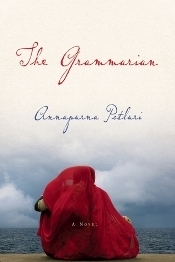 Readers and publishers often wonder whether reviews sell books. I’d have to say yes, they can; the February 15th review of Annapurna Potluri’s The Grammarian in Shelf Awareness certainly sold me. Literary fiction about a Parisian linguist who travels to south India in 1911 and unwittingly provokes a cultural taboo? It was a novel I hadn’t heard of before, and the subject caught my attention (my academic background is in linguistics). The unfamiliar setting and haunting cover art didn't hurt. I ordered it the next day.
Readers and publishers often wonder whether reviews sell books. I’d have to say yes, they can; the February 15th review of Annapurna Potluri’s The Grammarian in Shelf Awareness certainly sold me. Literary fiction about a Parisian linguist who travels to south India in 1911 and unwittingly provokes a cultural taboo? It was a novel I hadn’t heard of before, and the subject caught my attention (my academic background is in linguistics). The unfamiliar setting and haunting cover art didn't hurt. I ordered it the next day. Its initial protagonist is Dr. Alexandre Lautens, a handsome professor at the Sorbonne, who has left his wife and children behind to study in India, a distant place with “as many languages as there were gods.” During his sabbatical, he plans to create the first written grammar of the Telugu language.
His host family in the coastal city of Waltair, the Adivis, is comprised of one man and four women: Shiva, an outwardly gracious and socially conscious Anglophile, plus his wife, mother, and two teenage daughters. Mohini is the beautiful younger girl, while Anjali, plain and crippled from polio, hides a sensitive heart behind a stoic mask, a defensive reaction to her father’s disappointment in her.
Their household is in a state of excitement preparing for Mohini’s forthcoming wedding, an event that Anjali, sadly, will never experience herself. During his stay, Alexandre takes an interest in Anjali, who enjoys literature and provides him with vocabulary for his project. Anjali finds him exotic and beautiful, while his feelings are more fatherly than romantic.
But when Alexandre's innocent act of kindness towards her – giving her a swimming lesson at the local beach – results in harsh gossip, embarrassment, and shame, Shiva makes a decision that has devastating and long-lasting repercussions for both his daughter and the foreign linguist.
A gorgeously composed yet solemn exploration of social values, prejudice, and the many forms of human expression, The Grammarian illustrates the purpose and power of language, as well as its constraints. The freedom that Anjali and Alexandre both feel, floating in the ocean, is a pure moment of happiness that, for them, transcends words:
The morning sun bounced its light off their skin, and the sea and sand; everything was bright with the evanescing promises morning brings, and her skin shone gold as his did in silver, the water crackling with sun… She thought for a moment of drowning so as to never have to live this life as before, because she now knew what it felt like to be awake.
Their return to the real world, however, is fraught with misunderstanding and distress.
In this time and place, some cultural barriers can't be bridged, something that Shiva’s elderly mother, Kanakadurga, knows well. She and Alexandre become close friends, sharing many delightful, edifying conversations that please them both. A magnificent character, she is a wise, forward-thinking realist about her tradition-bound society. Kanakadurga realizes that for Anjali, the granddaughter she adores, her only hope for a rich, full life lies elsewhere.
This novel is perfect for those who love languages and foreign cultures and seeing the complicated intersections between them. It demonstrates the author’s creative skill in bending language to her purpose. She crafts many turns of phrase that struck me with their beauty and rightness: England with its “riots of yellow leaves in autumn,” the streets of India “like a great mass of mottled humanity and beasts great and small, all converging in the light of a late afternoon upon some point in the horizon.”
Although I hadn’t been familiar with Telugu beforehand, the narrative would seem to reflect its melodic nature. With their multiple strings of phrases, Potluri’s lengthy, descriptive sentences create a punctuated rhythm that has an almost mesmerizing effect. In addition, just as the underlying meanings of words can be glimpsed through their etymologies, the characters are shaped by what happened in the past – particularly Shiva, an admirer of all things European in an era of increasing nationalist sentiment. The novel’s prologue, set in 1896, adds context to his later actions. In this way, The Grammarian can be read on multiple levels.
It’s a regrettable irony, in a novel about language, that the publisher didn’t take greater care with the text. With its numerous errors, typographical and otherwise, it reads like a manuscript that missed the copy editing stage. I read from the published hardcover, not an ARC.
Still, I hope this defect doesn’t discourage readers. In her account of a “mythic and strange land, located less in markers of longitude and latitude than in the psyche,” Potluri pinpoints why many of us read historical fiction – or fiction in general. It has the potential to put us into a mindset not our own, immersing us in a milieu we couldn’t otherwise visit – a goal she has accomplished superbly.
The Grammarian was published by Berkeley's Counterpoint Press in February ($24.00, hb, 272pp).
Published on March 26, 2013 07:00
March 25, 2013
My 7th anniversary small press giveaway
We'll be returning to book reviews, guest posts, and other exciting things on Tuesday... but today it's time to party!

Reading the Past went live seven years ago, on March 25, 2006. According to Hallmark, the traditional gift for a 7th anniversary is wool or copper, neither of which is all that exciting. We're recovering from yet another snowstorm during the never-ending winter of 2013, so while I sit in my office with a warm shawl wrapped around me and wool socks on my feet, I thought I might give away a book or two instead.
Up for grabs: Your choice of any small press novel mentioned in a post here between March 1st and March 31st of this year. You don't have to tell me which one now – the month's not yet over – but I'll ask you to pick one if you're the lucky winner. Your thoughts (optional) on any aspect of the site are very welcome, too. What do you like most? What would you like to see more of?
One entry per person, please; deadline March 31st. I'll give away a book for every 50 entries I receive. This contest is open internationally.
Good luck, and thanks for visiting and reading my site!

Reading the Past went live seven years ago, on March 25, 2006. According to Hallmark, the traditional gift for a 7th anniversary is wool or copper, neither of which is all that exciting. We're recovering from yet another snowstorm during the never-ending winter of 2013, so while I sit in my office with a warm shawl wrapped around me and wool socks on my feet, I thought I might give away a book or two instead.
Up for grabs: Your choice of any small press novel mentioned in a post here between March 1st and March 31st of this year. You don't have to tell me which one now – the month's not yet over – but I'll ask you to pick one if you're the lucky winner. Your thoughts (optional) on any aspect of the site are very welcome, too. What do you like most? What would you like to see more of?
One entry per person, please; deadline March 31st. I'll give away a book for every 50 entries I receive. This contest is open internationally.
Good luck, and thanks for visiting and reading my site!
Published on March 25, 2013 06:00
March 22, 2013
A look at Barbara Garland Polikoff's Her Mother's Secret, set in late 19th-century Chicago
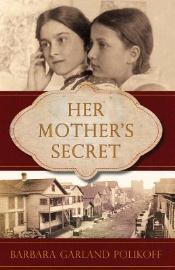 Her Mother's Secret features a 15-year-old heroine, but you don't have to be a teenager to appreciate the detail-rich environment the author creates. Barbara Garland Polikoff has partly based her latest novel on the life of her "gypsy aunt," a lively woman with bohemian fashion sense who studied and later taught art at Chicago's Hull House.
Her Mother's Secret features a 15-year-old heroine, but you don't have to be a teenager to appreciate the detail-rich environment the author creates. Barbara Garland Polikoff has partly based her latest novel on the life of her "gypsy aunt," a lively woman with bohemian fashion sense who studied and later taught art at Chicago's Hull House.Perhaps to intertwine her aunt's experiences with well-known events of the late 19th century, the author shifted the plot backward by about 20 years. She writes with a light, easygoing touch, which should make it comfortable for younger readers to assimilate her story. Although the historical and cultural backdrops are presented with well-rendered specificity, many of the problems that Sarah and her family deal with are universal.
The Goldmans, as readers learn early on, are Jewish immigrants who fled their Russian shtetl following pogroms. By 1892, they've settled into their Chicago neighborhood, where Sarah's father Jacob works as a butcher. However, the personal troubles they faced in the old country still cast a long shadow over their lives and their interactions with one another. This is where the book's title comes from; there's something hidden in her mother Rifke's past that Sarah knows nothing about.
Although she remains close to her father, Sarah struggles with the knowledge that her older sister Fanny is Rifke's favorite. When Fanny starts dating a young Irishman who runs with a bad crowd, her parents are less than pleased, which unexpectedly puts Sarah on Rifke's good side for a change. Adults should appreciate how Polikoff refers to Rifke and Jacob by their first names, since this makes them seem more approachable. The Goldmans undergo difficult times, but their story is warmly told.
Most of the novel covers Sarah's coming of age, her relationships with her parents and siblings, and her exploration of the artistic talents that blossom during her classes at Hull House. She becomes best friends with an Italian classmate and takes a trip to the 1893 World's Columbian Exposition with an amusing young man named Charley. "How small her parents' restrictions had made her world," she thinks, and readers should enjoy watching as her true personality emerges.
The novel reads in places like a series of interconnected vignettes. Some important moments are told about only in retrospect, which may leave readers feeling a little left out. Overall, though, it presents an entertaining look at Chicago at a vibrant time in its history, as seen through the eyes of a shy young woman who gradually learns where she belongs.
Her Mother's Secret was published by Allium Press of Chicago in 2012 (trade pb, $14.99, 169pp). A 12-page companion guide with photos, historical background, and discussion questions is available online. Allium Press is an independent publisher focusing on fiction with a Chicago connection. Their tagline is "Rescuing Chicago from Capone… one book at a time."
Published on March 22, 2013 10:00
March 20, 2013
New historical novels from small and independent presses, part 2
Here's the second half of this month's feature on recently published novels from small and independent presses. If you missed part 1, it can be found here. Please leave your recommendations for other small press historicals in the comments!
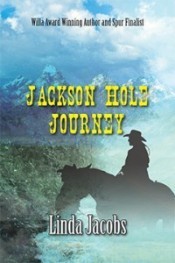
Romance and adventure featuring a Italian female chef and a handsome rancher of Nez Perce descent, taking place amid the rustic environment of Yellowstone Park in 1925. Part of the author's continuing Yellowstone series (the last of which was Lake of Fire [link goes to an older review of mine], set in 1900 and covering the previous generation). Camel Press, an independent publisher of genre fiction (Mar '13, $15.95, trade pb, 358pp).
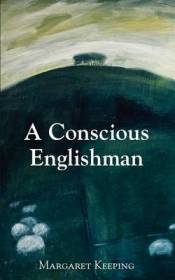
WWI-era biographical fiction with a literary bent, about English poet Edward Thomas, his devoted wife Helen, and his friendship with an American colleague, poet Robert Frost. StreetBooks, a micro-publisher from west Oxfordshire, UK (Feb '13, £9.99, trade pb).
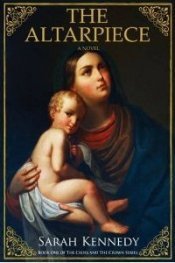
A reluctant nun in Yorkshire finds herself torn between her religion and her country's future after Henry VIII breaks with Rome. Written by an English professor with a PhD in Renaissance literature. Knox Robinson, a specialist publisher of historical fiction, historical romance, and fantasy (Mar '13, $27.99 or £19.99, hb, 238pp).
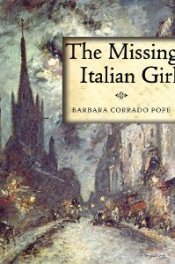
In 1897 Paris, Clarie Martin, wife of one of the city's magistrates, looks into the mysterious deaths of immigrant girls. Part 3 of an ongoing series; the previous two books featured Clarie's husband, Bernard Martin, as investigator. Pegasus, a NY-based independent press (Feb '13, $25.95, hb, 384pp).

This gentle romantic adventure set during the first years of Kentucky's settlement (1774-1781) was shortlisted for the Pulitzer Prize following its original 1930 publication. This was the winner of the publisher's 2012 "Uncover a Classic" competition. Hesperus Press, whose specialty is neglected English literary classics (Oct '12, £8.99, trade pb, 200pp, available in the US in June).
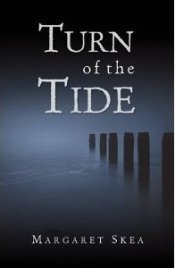
Turn of the Tide is another competition winner; it took the Historical Fiction prize in the 2011 Harper Collins / Alan Titchmarsh People's Novelist Competition. A man finds his actions restricted by ongoing clan wars in 16th-century Scotland. Capercaillie Books, a small press from Edinburgh (Nov '12, £8.99, trade pb).
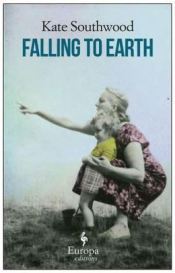
An exploration of survivor guilt and societal resentment that sweeps through a small Illinois town in 1925, following the worst tornado in American history. Europa Editions, which publishes literary fiction, mystery, and narrative nonfiction from around the world (Mar '13, $16.00, pb, 272pp).
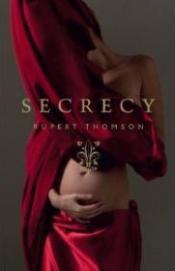
In 1691 Florence, a wax artist fascinated by the grotesque receives a lucrative commission that brings him into the circle of an apothecary's daughter with a shocking secret. What a cover! Granta, an independent UK press (Mar '13, £14.99, hb, 320pp).
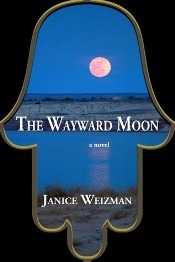
A Jewish physician's daughter confronts religious turmoil after being forced to flee her home in the 9th-century Middle East, during Islam's Golden Age. Yotzeret, an independent Jewish-focused publisher (Aug '12, $14.95, trade pb, 328pp).
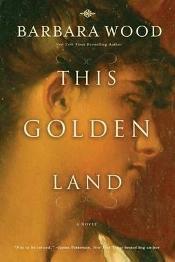
Veteran historical novelist Wood returns to a subject that has long intrigued her, women in the medical arts, with this epic about a 19th-century Englishwoman who pursues her dream of becoming a midwife in Melbourne, Australia. Turner, a US-based independent (May '12, $19.95, trade pb, 464pp).

Romance and adventure featuring a Italian female chef and a handsome rancher of Nez Perce descent, taking place amid the rustic environment of Yellowstone Park in 1925. Part of the author's continuing Yellowstone series (the last of which was Lake of Fire [link goes to an older review of mine], set in 1900 and covering the previous generation). Camel Press, an independent publisher of genre fiction (Mar '13, $15.95, trade pb, 358pp).

WWI-era biographical fiction with a literary bent, about English poet Edward Thomas, his devoted wife Helen, and his friendship with an American colleague, poet Robert Frost. StreetBooks, a micro-publisher from west Oxfordshire, UK (Feb '13, £9.99, trade pb).

A reluctant nun in Yorkshire finds herself torn between her religion and her country's future after Henry VIII breaks with Rome. Written by an English professor with a PhD in Renaissance literature. Knox Robinson, a specialist publisher of historical fiction, historical romance, and fantasy (Mar '13, $27.99 or £19.99, hb, 238pp).

In 1897 Paris, Clarie Martin, wife of one of the city's magistrates, looks into the mysterious deaths of immigrant girls. Part 3 of an ongoing series; the previous two books featured Clarie's husband, Bernard Martin, as investigator. Pegasus, a NY-based independent press (Feb '13, $25.95, hb, 384pp).

This gentle romantic adventure set during the first years of Kentucky's settlement (1774-1781) was shortlisted for the Pulitzer Prize following its original 1930 publication. This was the winner of the publisher's 2012 "Uncover a Classic" competition. Hesperus Press, whose specialty is neglected English literary classics (Oct '12, £8.99, trade pb, 200pp, available in the US in June).

Turn of the Tide is another competition winner; it took the Historical Fiction prize in the 2011 Harper Collins / Alan Titchmarsh People's Novelist Competition. A man finds his actions restricted by ongoing clan wars in 16th-century Scotland. Capercaillie Books, a small press from Edinburgh (Nov '12, £8.99, trade pb).

An exploration of survivor guilt and societal resentment that sweeps through a small Illinois town in 1925, following the worst tornado in American history. Europa Editions, which publishes literary fiction, mystery, and narrative nonfiction from around the world (Mar '13, $16.00, pb, 272pp).

In 1691 Florence, a wax artist fascinated by the grotesque receives a lucrative commission that brings him into the circle of an apothecary's daughter with a shocking secret. What a cover! Granta, an independent UK press (Mar '13, £14.99, hb, 320pp).

A Jewish physician's daughter confronts religious turmoil after being forced to flee her home in the 9th-century Middle East, during Islam's Golden Age. Yotzeret, an independent Jewish-focused publisher (Aug '12, $14.95, trade pb, 328pp).

Veteran historical novelist Wood returns to a subject that has long intrigued her, women in the medical arts, with this epic about a 19th-century Englishwoman who pursues her dream of becoming a midwife in Melbourne, Australia. Turner, a US-based independent (May '12, $19.95, trade pb, 464pp).
Published on March 20, 2013 09:00
March 18, 2013
New historical novels from small and independent presses, part 1
This is the first of two posts showcasing ten recent historical novels from small and independent publishers, chosen primarily out of personal interest (I have copies of most of them). Please explore the publishers' websites, linked below, for more details and additional books.
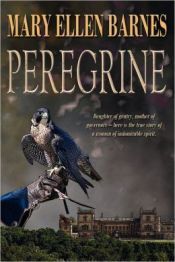
Biographical fiction about Frances Latham, daughter of Charles I's royal falconer in the 17th century, who defies her family's and society's expectations. The novel moves from the English countryside to London to Ireland and concludes at last in colonial America. Fireship Press, which specializes in nautical and historical fiction and nonfiction (Sep '12, $19.95, trade pb, 395pp).

The story of the lost Khmer empire and the construction of the mountain-temple of Angkor Wat in what today is Cambodia, as seen through the eyes of a remarkable heroine, a woman named Sray. River Books, a Bangkok-based press focusing on Thai arts and culture (Jan '13, $14.95, trade pb, 500pp).
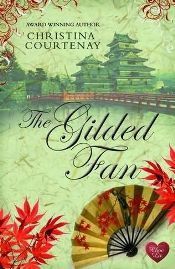
This adventurous sequel to The Scarlet Kimono, set in 1641 Japan, follows a young Japanese woman forced to flee to England aboard a ship owned by the Dutch East India Company in order to save her life. Choc Lit, a UK press for women's romantic fiction (Feb '13, £7.99, trade pb, 400pp).

In the late 18th century, a woman finds adventure, danger, and romance as she journeys through the wilderness to rescue her kidnapped cousin. Bell Bridge Books, which centers on but isn't limited to Southern fiction (Sept '12, $18.95, trade pb, 329pp).
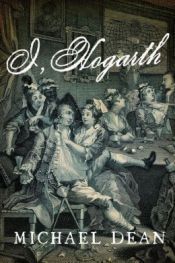
In this fictional autobiography, 18th-century painter and printmaker William Hogarth tells of his life and the age in which he lived. Overlook Press, an independent general interest publisher (Jan. '13, $26.95, hb, 272pp).
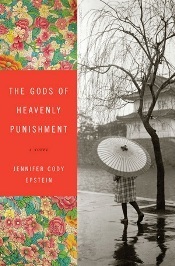
Literary fiction about a Japanese teenager who finds herself in the wrong place at the very wrong time - the firebombing of Tokyo in 1945 - and how she and others, including some Americans, come to terms with the aftermath. Norton, an independent US press (Mar '13, $26.95, hb, 384pp).
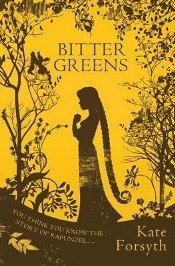
In this imaginative retelling of the Rapunzel fairy tale and one of its first authors, set in France and Venice in the 16th and 17th centuries, three women's stories intertwine. Previously published by Random House Australia (see my interview with the author from last May). Allison & Busby, a "small publisher of big books" (Feb '13, £12.99, hb, 496pp).
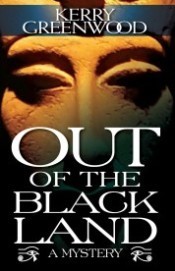
A historical mystery set in a distant era, 18th Dynasty Egypt, in which Akhnaten's ascent to the throne stirs up palace intrigue. Poisoned Pen Press, which focuses on mysteries (Feb '13, $14.95 pb, $24.95 hb, 250pp).
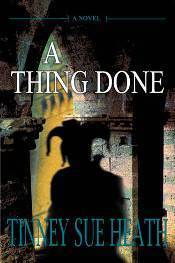
A jester-for-hire gets caught up in the fierce rivalry between warring families in early 13th-century Florence when he's ordered to carry out a prank. Fireship Press (Oct '12, $19.95, trade pb, 311pp).
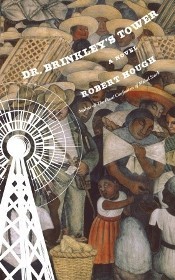
Literary fiction on the changing fortunes of a tiny border town in 1930s Mexico after a local doctor claims to have found a cure for impotence - and promotes it far and wide via an enormous radio tower. Steerforth, a publisher of quality fiction and nonfiction (Jan '13, $14.99, trade pb, 432pp). Previously published by House of Anansi in Canada.

Biographical fiction about Frances Latham, daughter of Charles I's royal falconer in the 17th century, who defies her family's and society's expectations. The novel moves from the English countryside to London to Ireland and concludes at last in colonial America. Fireship Press, which specializes in nautical and historical fiction and nonfiction (Sep '12, $19.95, trade pb, 395pp).

The story of the lost Khmer empire and the construction of the mountain-temple of Angkor Wat in what today is Cambodia, as seen through the eyes of a remarkable heroine, a woman named Sray. River Books, a Bangkok-based press focusing on Thai arts and culture (Jan '13, $14.95, trade pb, 500pp).

This adventurous sequel to The Scarlet Kimono, set in 1641 Japan, follows a young Japanese woman forced to flee to England aboard a ship owned by the Dutch East India Company in order to save her life. Choc Lit, a UK press for women's romantic fiction (Feb '13, £7.99, trade pb, 400pp).

In the late 18th century, a woman finds adventure, danger, and romance as she journeys through the wilderness to rescue her kidnapped cousin. Bell Bridge Books, which centers on but isn't limited to Southern fiction (Sept '12, $18.95, trade pb, 329pp).

In this fictional autobiography, 18th-century painter and printmaker William Hogarth tells of his life and the age in which he lived. Overlook Press, an independent general interest publisher (Jan. '13, $26.95, hb, 272pp).

Literary fiction about a Japanese teenager who finds herself in the wrong place at the very wrong time - the firebombing of Tokyo in 1945 - and how she and others, including some Americans, come to terms with the aftermath. Norton, an independent US press (Mar '13, $26.95, hb, 384pp).

In this imaginative retelling of the Rapunzel fairy tale and one of its first authors, set in France and Venice in the 16th and 17th centuries, three women's stories intertwine. Previously published by Random House Australia (see my interview with the author from last May). Allison & Busby, a "small publisher of big books" (Feb '13, £12.99, hb, 496pp).

A historical mystery set in a distant era, 18th Dynasty Egypt, in which Akhnaten's ascent to the throne stirs up palace intrigue. Poisoned Pen Press, which focuses on mysteries (Feb '13, $14.95 pb, $24.95 hb, 250pp).

A jester-for-hire gets caught up in the fierce rivalry between warring families in early 13th-century Florence when he's ordered to carry out a prank. Fireship Press (Oct '12, $19.95, trade pb, 311pp).

Literary fiction on the changing fortunes of a tiny border town in 1930s Mexico after a local doctor claims to have found a cure for impotence - and promotes it far and wide via an enormous radio tower. Steerforth, a publisher of quality fiction and nonfiction (Jan '13, $14.99, trade pb, 432pp). Previously published by House of Anansi in Canada.
Published on March 18, 2013 11:00
March 16, 2013
A spotlight on Lindsay Ashford's The Mysterious Death of Miss Austen
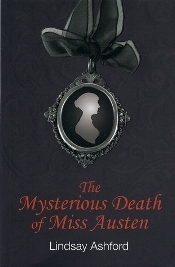 Honno ed., 2011I bought a copy of Lindsay Ashford's The Mysterious Death of Miss Austen last year, based on the description in the online catalog of its publisher, Honno, an independent press featuring Welsh women's writing. After reading another novel of theirs in 2009, Margaret Redfern's Flint, I knew their editors had discerning tastes.
Honno ed., 2011I bought a copy of Lindsay Ashford's The Mysterious Death of Miss Austen last year, based on the description in the online catalog of its publisher, Honno, an independent press featuring Welsh women's writing. After reading another novel of theirs in 2009, Margaret Redfern's Flint, I knew their editors had discerning tastes.I didn't know at the time, though, that its author, a popular British mystery novelist with an academic background in criminology, had been interviewed by the Daily Mail and the Guardian about her controversial revelations or that her novel had been picked up by Sourcebooks for publication in the US. (Although the latter should surprise no one. Sourcebooks has cornered the market on Austen-themed fiction, and this was a smart purchase.)
Behind its dark yet unassuming cover lies an absorbing, disturbing, and shocking recounting of events from the life of one of England's most beloved authors. Ashford runs a poisoned comb through the dynamics of the large and close-knit Austen family and comes up with a provocative notion that nonetheless—I can't help but admit—lies within the realm of possibility. Did Jane Austen die from unnatural causes? If so, how did this come about? Was she murdered, and by whom?
The mystery hinges on two sources. In one of Jane's letters, written just before she died at the young age of 41 in 1817, she described her looks as "black and white and every wrong colour." Also, some years later, after forensic techniques had sufficiently developed, a lock of Austen's hair tested positive for arsenic.
Ashford's novel offers her interpretation of these facts and others, all taken from Jane's daily life and known activities and those of her relatives and friends. The "detective" (a term used loosely, as the book doesn't read like typical crime fiction) is Anne Sharp, governess to the children of Jane's wealthy brother Edward Knight. Anne, a bluestocking with no marriage prospects, sees Jane as a kindred spirit and conceives an unrequited love for her—just one of many curious assumptions the author makes. Anne's keen observations of Jane's other relationships allow her insight into what may have been the cause of her dear friend's death.
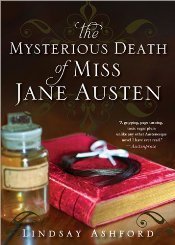 Sourcebooks ed., August 2013Saying more would be revealing too much of a tale that readers would be best off discovering on their own. I feel uneasy about the depiction of some historical characters, and whether or not I bought into the solution, I found it a fascinating read. The settings are delightful and deftly rendered, as readers follow Anne from the Knights' isolated country house at Godmersham Park in Kent to Bath's famous Pump Room, where she overhears some startling conversations, to her new employer's home in Yorkshire.
Sourcebooks ed., August 2013Saying more would be revealing too much of a tale that readers would be best off discovering on their own. I feel uneasy about the depiction of some historical characters, and whether or not I bought into the solution, I found it a fascinating read. The settings are delightful and deftly rendered, as readers follow Anne from the Knights' isolated country house at Godmersham Park in Kent to Bath's famous Pump Room, where she overhears some startling conversations, to her new employer's home in Yorkshire. Although I'm far from an expert on Austen or her novels, I visited the Jane Austen Centre in Bath last year, learned more about her family history, and saw all of the exhibits and related memorabilia. It had the effect of piquing my interest in her life. Halfway through reading this book, while doing some online research, I also learned that Anne Sharp was a historical character, one of the few individuals to whom Austen had sent a presentation copy of Emma. That knowledge added even more to my reading experience.
If you're at all interested in Jane Austen's writing, life story, and the places and people that surrounded and influenced her, give this insidiously compelling book a try and draw your own conclusions.
The Mysterious Death of Miss Austen was published in 2011 by Honno Press (£8.99, trade pb, 331pp). This August, Sourcebooks will publish The Mysterious Death of Miss Jane Austen in the US and Canada ($14.99 US / $16.95 Can, trade pb, 432pp; note the slight change to the title).
Published on March 16, 2013 09:00



